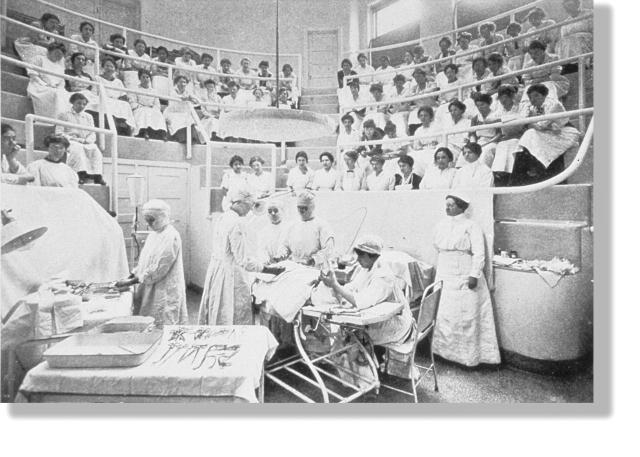Figure 1.
Source. Prints and Photographs Collection, History of Medicine Division, National Library of Medicine.
THE WOMEN’S MEDICAL College of Pennsylvania, founded in 1850 as the Female Medical School of Pennsylvania, was the first school established to train women in medicine and to offer them the MD degree.1 At the school’s first graduation ceremony in 1851, one of the founders, the professor of obstetrics, Joseph S. Longshore, told the 8 graduating students that “this day forms an eventful epoch in the history of your lives, in the history of woman, in the history of the race.”2 Like many Quakers, Longshore opposed slavery and championed women’s rights as well as other radical causes. His sister-in-law, Hannah Longshore, a graduate of the first class, served as “demonstrator in anatomy.”
Partly to provide clinical experience for the women medical students, a group of Quaker women founded the Woman’s Hospital of Philadelphia in 1861. Access to a hospital was essential for women faculty and graduates wanting to develop careers in surgery, and, of course, they were refused access to most forms of hospital training. The first resident physician of the Woman’s Hospital, Emeline Horton Cleveland, would be one of the first women surgeons in the United States to perform major gynecologic procedures.
The local medical societies, the Philadelphia County Medical Society and the Pennsylvania State Medical Society, refused admission to Women’s Medical College graduates and even banned medical society members from consulting with women physicians. In 1875, several graduates therefore formed the Alumnae Association of the Women’s Medical College of Pennsylvania, one of the earliest women’s medical societies. By 1895, it had 300 dues-paying members who helped support and defend the college in the difficult times ahead.
The Women’s Medical College adopted a 4-year curriculum in 1891, one of the first American medical schools to do so. The college quickly expanded its laboratory offerings in the 1890s, and its alumnae founded a dispensary to offer free care to poor women and children, at the same time providing more “clinical material” for students and recent graduates.
In 1904, the college built a small hospital pavilion with male and female wards and an operating room; a larger permanent hospital was built in stages between 1907 and 1913. This image shows the clinical amphitheater in 1915 or 1916, with a surgical operation in progress and the women medical students paying close attention.
Despite many continuing crises and constant financial problems, this historic women’s medical school survived throughout the early 20th century through the loyal support of its alumnae, in an era when other women’s medical colleges were closing. Finally, in 1969, it succumbed to financial pressures and decided to admit male students.3 As the Medical College of Pennsylvania, however, it faced continuing financial difficulties. Historian Steven Peitzman (from whose book A New and Untried Course1 all details presented here about the history of the college have been taken) has briefly sketched the harrowing series of mergers and bankruptcies that occurred as the college was swept up into conglomerate, which in its turn collapsed in a “bizarre and calamitous result.”1(p254)
References
- 1.Peitzman SJ. A New and Untried Course: Woman’s Medical College and Medical College of Pennsylvania, 1850–1998. New Brunswick, NJ: Rutgers University Press; 2000.
- 2.Longshore JS. Valedictory Address Delivered Before the Graduating Class at the First Annual Commencement of the Female Medical College of Pennsylvania. Philadelphia, PA: Lippincott; 1852, p. 4
- 3.Morantz-Sanchez R. Sympathy and Science: Women Physicians in American Medicine. Chapel Hill, NC: University of North Carolina Press; 1985.



